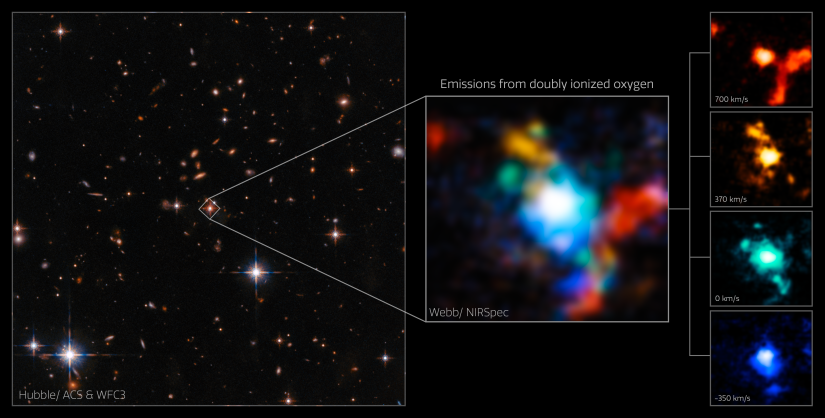Astronomers made an unexpected discovery while using the James Webb Space Telescope to peer back in time to the early universe, they saw a dazzling group of galaxies fusing together around a rare red quasar within a gigantic black hole.
The discoveries made by Johns Hopkins University and a global team present a rare chance to witness how galaxies came to form the modern cosmos billions of years ago, according to the discovery's press release.

Extremely Red Quasar
The SDSS J165202.64+172852.3 quasar, which is blindingly brilliant and extremely red, is roughly 11.5 billion years old and one of the most powerful ever seen from such a great distance away, according to the researchers.
"We think something dramatic is about to happen in these systems," co-author Andrey Vayner, a Johns Hopkins postdoctoral fellow studying the evolution of galaxies, said in a statement.
"The galaxy is at this perfect moment in its lifetime, about to transform and look entirely different in a few billion years."
The James Webb Space Telescope is by far the largest and most potent telescope ever carried into orbit. It was launched in December by NASA, the European Space Agency, and the Canadian Space Agency.
Although its first broad observations were made public in July, this quasar image is one of just 13 "early peek" projects that were chosen following a fiercely competitive international contest to determine where the telescope will be directed during its first several months of operation.
Earlier investigations of this region of space by the Gemini-North telescope in Hawaii and the Hubble Space Telescope had discovered the quasar and suggested the presence of a galaxy in a transitional state.
But it wasn't until later JWST observations that it was discovered there were not just one, but at least three galaxies revolving around the quasar.
Dense Location
The Webb telescope observed at least three galaxies moving very swiftly, which suggests there is a substantial amount of matter in the region. According to the research team, this area may be one of the densest known locations of galaxy formation in the early universe.
Even Vayner was surprised that the space telescope, which only began relaying research photos back to Earth in July, has generated views of the region with such clarity. Vayner had envisaged witnessing this quasar with JWST as much as ten years ago.
The research team refers to the eye-searingly bright quasar as a "monster" black hole at the galaxy swirl's heart. It is a rare type of quasar known as an "extremely red" quasar that is 11.5 billion years old and one of the most potent objects ever observed at such a distance.
Vayner described it as simply a black hole that is increasing in mass while consuming the gas around it. The quasar appears red because of the gas and dust clouds that exist between Earth and the blazing gas close to the black hole.
The team is already working on follow-up studies into this unexpected galaxy cluster to understand more about the creation of dense, turbulent galaxy clusters as well as how the supermassive black hole at their center impacts them.
Related Article : A New York Art Exhibit Features NASA's James Webb Images in 3D, VR, Holograms, and More!
This article is owned by Tech Times
Written by Joaquin Victor Tacla
ⓒ 2025 TECHTIMES.com All rights reserved. Do not reproduce without permission.




